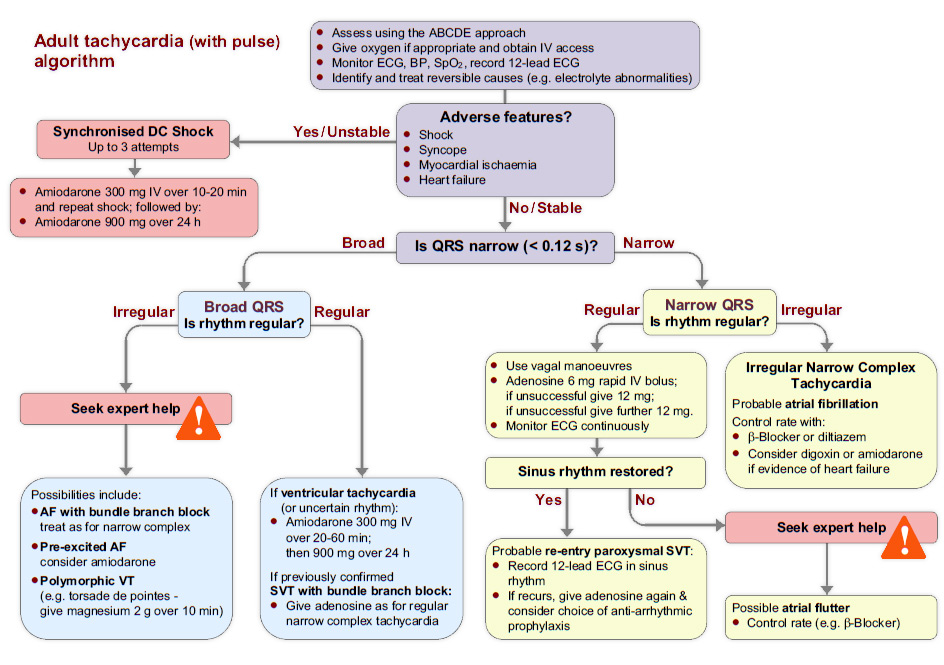
- Synchronised cardioversion video
Read the following scene setter and transcript.
Transcript
This short video clip shows the process for delivering synchronised cardioversion. Types of defibrillator vary and whilst the layout of the defibrillator you may use in clinical practice or on the face to face element of your ALS course might not be the same as featured here, the principles of the treatment will remain the same.
Carry out synchronised cardioversion under general anaesthesia or conscious sedation, administered by a healthcare professional competent in the technique being used.
Attach ECG electrodes to the patient in the standard positions, this will allow continuous monitoring throughout the procedure and will facilitate synchronisation of the shock delivery.
Apply the defibrillator pads in the appropriate position in order to maximise transmyocardial current. For atrial flutter or Atrial fibrillation as shown here, use anteroposterior positions when it is practicable to do so.
Select the appropriate energy as described in the previous topic. In this case 120J biphasic is selected.
Ensure that the defibrillator is set to deliver a synchronised shock. This delivers the shock to coincide with the R wave. An unsynchronised shock could coincide with a T wave and cause ventricular fibrillation. The defibrillator display will change when synchronised mode is selected to alert the user. In this case a white mark is displayed over each R wave and the word ‘Sync’ is visible.
Synchronised cardioversion should also be delivered with the same attention to safety as a defibrillatory shock; always ensure the chest is dry, that no-one is in direct or indirect contact with the patient and remove free flowing oxygen from the immediate vicinity. Further detail about safe shock delivery can be found on chapter 9 of the ALS manual.
Charge the defibrillator and once it is safe to do so press the shock button. Keep the shock button pressed until after the shock has occurred – there may be a slight delay before the shock is delivered.
Some defibrillators will remain in synchronised mode following delivery while others will not. It important to confirm the defibrillator is in the correct mode before delivering any further shocks.
If the shock is successful it important to reassess the patient using the ABCDE approach, record a 12 lead ECG and correct all reversible factors that may predispose to further arrhythmia. Ensure that appropriate further expert help and advice is obtained at the most appropriate time for the patient.
Credits
Produced by Mike Scott and Robin Davies
Copyright Resuscitation Council (UK). 2011
You have reached the end of this presentation. Either use the controls to revisit the presentation or select Next to continue.
References
See chapter 11 of the ALS manual for further reading about the tachycardia algorithm.
Algorithm: The tachycardia algorithm

